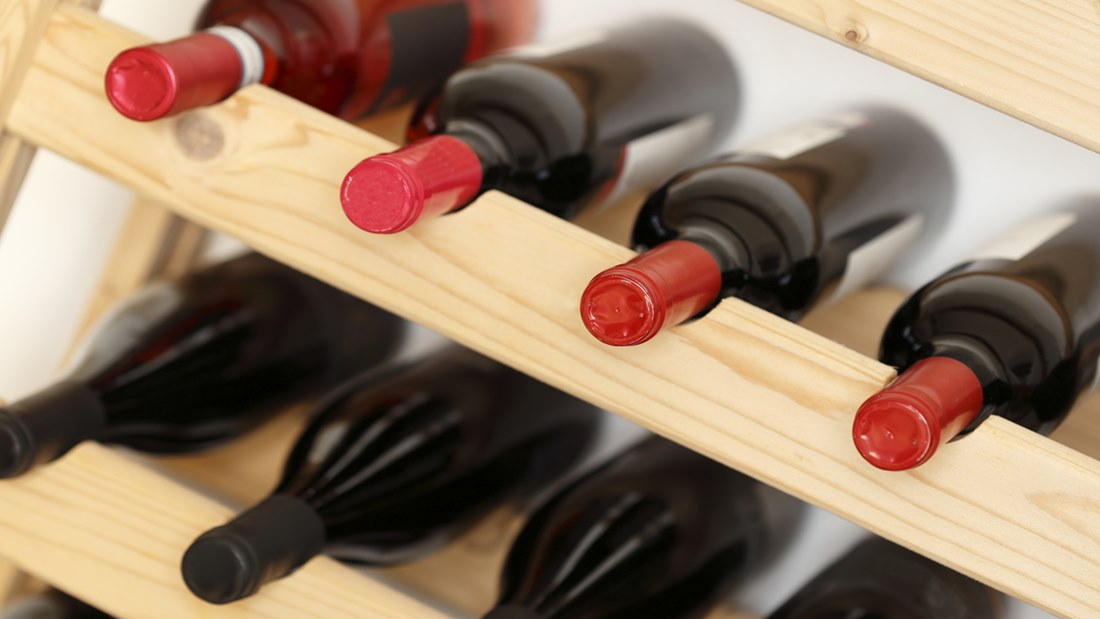
15 Jan Understanding What Bottle Shock is and How to Fix It
Bottle shock is also sometimes referred to as “bottle sickness”. This term describes either a recently shipped/packed wine that has almost no flavours or aromas and tastes temporarily “dumb”. Many people debate about this phenomenon; there is more of an anecdotal background to this than a scientific one.
However, the theory is that the compounds, tannins, phenolics etc. which are the complex element in wines are continually evolving. This evolution happens with each other as well as on their own. Motion or heat can cause stress to this standard process resulting in the wine to shut down temporarily.
It often occurs when the bottles have been jostled during transportation for an extended period, such as when they go from barrel or tank through the bottling line or if they are shipped over significant distances.
A Little More About Bottle Shock
Bottle shock will not happen if you are driving back home after purchasing wines from a local store to your home. However, if the bottles have been transported over several days or distance from a winery to the shipper and from there to your home, they can get unsettled.
There isn’t much clarity about what chemical reaction causes this phenomenon. But people have experienced this a sufficient number of times to conclude that bottle sickness is a real thing.
All the elements in the wine get jostled and out of sync during transportation over long distances. It causes a change in them, resulting in the loss of flavour and aroma. So if you are a wine collector and like to pick up premium wine on your travels, you must let them rest for at least a week before opening them.
Interesting Facts about Bottle Shock
Some people are familiar with the term bottle shock due to a film of the same name, relating to the Judgement of Paris. This bottle shock incident took place when a California wine bottler’s premium Chardonnay transformed into a dark brown colour for 24 hours.
However, the producer was familiar with this phenomenon and how it occurs when wines are first bottled, which is why he gave it some time to rest so that it could return to its original state. There are many dramatic Hollywood edits in this film; however, the event is a true one.
A bottle shocked wine will not taste like oxidised or corked wine, but it has a distinction of its own. In corked wine, the chemical compound present in it is released from the cork which gives the beverage a rotten, soggy cardboard taste. In wine, oxidation occurs when the bottle has been exposed to sunlight, and the liquid starts turning a brown shade and develops a stale and vinegary taste.
In comparison, bottle shocked wine will not have any specific taste and will only seem flat. It tastes as if the flavours are not in sync how they should be and do not meld well. So instead of a specific bad taste, it is just a bland taste which means you cannot enjoy the defined flavours of that particular wine.
Depending on the blend or variety, you might expect some standard scents in a new white wine such as citrusy, flowery, or fruity flavours. The aroma in many red wines includes coffee, toast and black fruit.
How to Spot Bottle Shocked Wine
There are times when the wine will just not open up. If you get very little flavour or no aroma at all, it means that your wine has suffered from bottle shock. The fruit will also be thin or transient, and the finish will be muted. When you are trying to detect whether the wine has been shocked, there should be no obvious flaws such as funky flavours or off scents. It is essential to know that bottle shock is not caused by yeast or any bacteria.
How to Fix Bottle Shock
So is there a fix for bottle sickness? One of the main aspects is time. It’s why many credible wineries let the freshly bottled wine sit in cellars for a few weeks before releasing these bottles to the public. Specific wineries also include notes in their larger shipments telling buyers to wait for at least a couple of weeks before opening a bottle from it. This is why it is a good idea to ask when a young wine has been bottled.
If the bottling has taken place in just the last couple of months and shipped immediately, it might need a few weeks or even up to a month or more to settle back down. In some cases, wines open up very quickly with decanting or aggressive aeration. Typically this process will fix a bottled wine that has excessive sulphur dioxide or even a reductive one to come out of shock.
However, if you have opened a bottle shocked wine already there isn’t much you can do about it. If you have purchased more bottles of that particular wine, make sure that you do not open them. Allow them to rest for a couple of weeks so that they can return to their original state. When you feel that your wine has been recently bottle shocked or shaken, don’t be in a hurry to open it. Instead, choose a different bottle until you are sure that the shocked one has rested and is now ready to drink.
While experts have varying opinions on how to treat bottle shocked wine, most believe that standing it upright for a few days before opening or decanting it is the right way. Some people think it disturbs the wine too much and that the sediment gets released into a suspension which takes months to clear up. However, if there is no sedimentation in the wine and it is relatively new, you don’t have to worry about this aspect.
Young and Old Wines Can Suffer From Wine Sickness
Just as you need to keep an eye out for young freshly bottled wine, paying equal attention to any older bottles of wine is crucial. These are also susceptible to bottle shock if they are jostled. When wine touches the 10-year mark, there will be a certain amount of sediment in it, and it is a by-product of aging wines because the phenolic molecules in it combine to form distinct polymers which precipitate out of the wine.
Disturbing the sediment will not cause bottle shock, but it isn’t pleasant to sip on a wine which has a lot of sediment floating around in it. If you are a wine lover and relish different wines from around Australia or the world, there will be some consequences such as bottle shock.
Transportation mediums cannot treat each bottle delicately, and the only way to overcome this problem is to allow the bottles some time to rest before you pop their cock. While bottle shock is a pervasive problem, the solution is simple. As long as you allowed the wine some time to recover and rest completely, you should not have any problem experiencing the wine’s exotic aromas and enchanting flavours that it was intended to produce.
Cellar Your Wines Correctly
As discussed, bottle shock typically occurs when the bottles have travelled over long distances or for extended periods. But a toned-down version of this phenomenon can occur even if wines are cellared in an area that experiences vibrations or movements. It can impact the quality, texture, flavours and aromas of your wine.
Keeping all of these qualities intact is a lot about cellaring your wines correctly. If you are serious about stocking wine for more extended periods, you should consider getting a custom wine cellar built. It would hold all your bottles well and protect them from external factors like light, humidity and vibrations. We at Signature Cellars are proven experts in this field and provide customised solutions to our clients.
We assess the area where the cellar has to be installed and provide the best solutions so that your wines are not exposed to direct sunlight, humidity, or high temperatures. This involves designing a safe, well-structured space and custom racks for different shapes and sizes of wine bottles.
Protecting Wine from Bottle Shock
The other aspects that we focus on are creating perfect storage spaces for wines where there is no or minimum vibration and movement. We also make sure that your ideas and vision are kept in view while designing your cellar so that you have the perfect storage space for your precious bottles.
We create movement-free spaces where your wines can rest in an undisturbed environment and mellow gracefully so that you can enjoy them the way the producers meant them to be.
To find out about how Signature Cellars can help you design and build a wine storage solution that can help protect your investment and add value to your home, call us on 1300 570 636 or email info@signaturecellars.com.au, and we will respond shortly to discuss your requirements.
Thanks for reading,
Neil Smallman
Signature Cellars
1300 570 636




No Comments